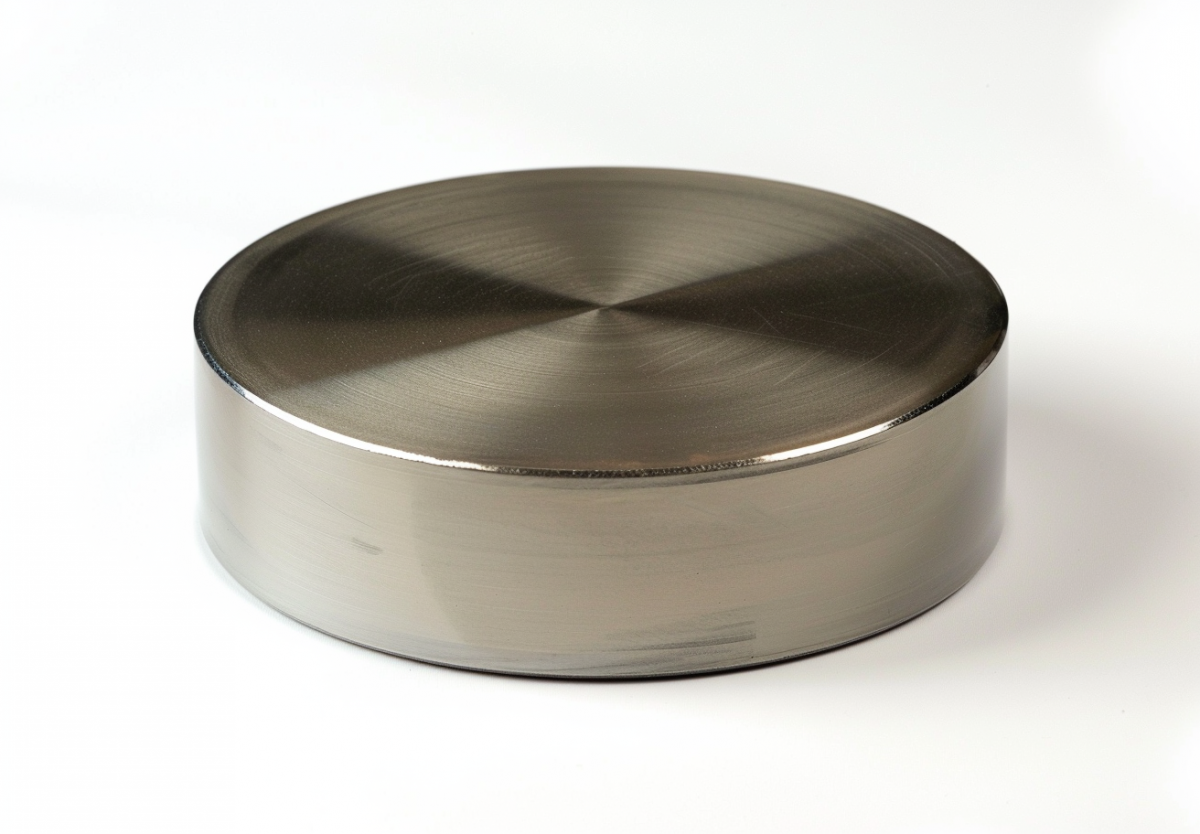Molybdenum (Mo) is a widely used material in sputtering targets because of its unique properties, especially its ability to handle extreme temperatures. In industries that require high-temperature stability and precise material deposition, molybdenum sputtering targets provide a reliable solution. This article explores why molybdenum is favored in sputtering processes and how it performs under intense heat conditions. For further insights into other materials that can withstand high temperatures, you can refer to SAM’s article titled “Top 10 Sputtering Target Materials that Can Withstand High Temperatures.“
What is Molybdenum?
Molybdenum is a metal known for its high melting point, excellent thermal conductivity, and strength. It belongs to the group of refractory metals, which are characterized by their ability to withstand high temperatures. Molybdenum is widely used in electronics, aerospace, and other high-tech industries. Its high melting point of 2,623°C makes it a perfect choice for sputtering targets in applications where heat resistance is essential.
Why Choose Molybdenum for Sputtering Targets?
Sputtering is a process used to deposit thin films of material onto surfaces. This is done by bombarding a target material with ions, causing atoms to be ejected from the target and deposited onto a substrate. Molybdenum sputtering targets are often selected for their ability to endure the physical stress of ion bombardment without breaking down.
Additionally, molybdenum’s thermal stability ensures that the target material remains consistent during the sputtering process, even at high temperatures. This makes it ideal for industries where precise control over thin film deposition is critical.
High-Temperature Resistance
One of the most important features of molybdenum is its high-temperature resistance. Molybdenum sputtering targets can endure extreme heat without melting or degrading, which is essential in many industrial processes. Molybdenum can maintain its structural integrity even when exposed to temperatures close to its melting point.
In industries like semiconductor manufacturing, where heat can easily exceed 1,000°C, molybdenum’s stability ensures the sputtering process remains efficient and accurate. This high-temperature performance also makes molybdenum suitable for the production of solar cells, flat-panel displays, and other devices that require thin-film coatings under intense heat.
Durability and Longevity
Molybdenum is not only heat-resistant but also extremely durable. It has a high resistance to corrosion and wear, meaning that sputtering targets made from molybdenum have a long lifespan. This durability reduces the need for frequent replacements, making it cost-effective for industries that rely on continuous and efficient production processes.
Moreover, molybdenum sputtering targets are known for their ability to maintain a high level of performance over time. Even when exposed to repeated ion bombardment, molybdenum retains its effectiveness, delivering consistent results.
Applications of Molybdenum Sputtering Targets
Molybdenum sputtering targets are used in various industries that rely on thin-film deposition. Some of the most common applications include:
- Semiconductors: Molybdenum is often used in the semiconductor industry to create thin films for electronic components. Its high conductivity and heat resistance make it ideal for this purpose.
- Solar Panels: In the production of solar cells, molybdenum is used as a back contact material. It helps in improving the efficiency of solar panels by enhancing the electrical connection.
- Flat-Panel Displays: Molybdenum sputtering targets are used to create thin films on flat-panel displays. These films improve the quality and longevity of the display by providing a stable and conductive surface.
- Aerospace Components: The aerospace industry uses molybdenum for coatings on parts that must withstand high temperatures and harsh conditions. Its thermal stability and durability make it perfect for these applications.
Thermal Stability and Performance
Molybdenum’s thermal stability is another key reason it is favored for sputtering targets. It remains stable even when subjected to rapid temperature changes, ensuring consistent deposition rates and high-quality thin films. This stability is especially important in processes where precise control over temperature is critical to the success of the deposition.
In addition to its thermal stability, molybdenum has excellent thermal conductivity. This allows heat to be efficiently dissipated during the sputtering process, preventing the target from overheating. By keeping the temperature under control, molybdenum sputtering targets help maintain the quality of the thin film and avoid any defects caused by excessive heat.
Challenges of Using Molybdenum
While molybdenum has many advantages, it also presents some challenges. The material’s hardness can make it difficult to machine into sputtering targets, which may increase production costs. Additionally, because molybdenum is less ductile than other metals, it may be more prone to cracking if not handled carefully during manufacturing.
However, these challenges are typically outweighed by the benefits of using molybdenum in high-temperature applications. Its strength, thermal stability, and durability make it a valuable material for industries where performance and precision are key.
Conclusion
Molybdenum sputtering targets are a crucial material for industries that require high-temperature resistance and durability. Whether used in semiconductors, solar panels, or aerospace components, molybdenum provides consistent performance and long-lasting reliability. Its ability to withstand extreme temperatures, resist corrosion, and maintain stability makes it an ideal choice for sputtering applications.
If your industry demands sputtering targets that can handle tough conditions, molybdenum is an excellent option. Stanford Advanced Materials (SAM) offers high-quality molybdenum sputtering targets that meet the demands of various industries. With a focus on precision and performance, SAM ensures that their molybdenum products provide reliable solutions for your thin-film deposition needs.

